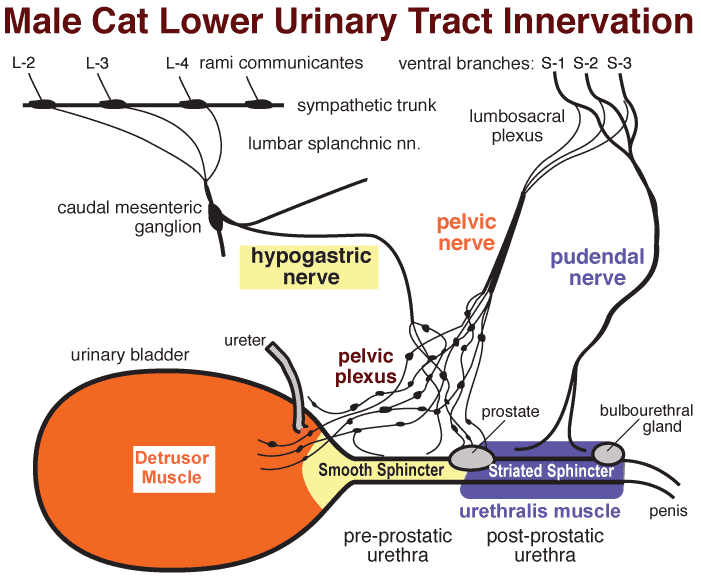Close
Innervation Schematic
Three sources of efferent innervation enable the three functional components of the lower urinary tract (detrusor; smooth muscle sphincter; & striated muscle sphincter) to operate as an effective unit.
Sympathetic innervation to the bladder and urethra originates with preganglionic neurons in the lumbar spinal cord. The preganglionic axons travel through lumbar splanchnic nerves to the caudal mesenteric ganglion where the majority synapse. The pathway continues via a right/left hypogastric nerve and pelvic plexus. Sympathetic postganglionic axons release norepinephrine which leads to contraction of the smooth muscle sphincter in the bladder neck and urethra and inhibition of the detrusor.
Parasympathetic innervation to the detrusor muscle begins with preganglionic neurons in the sacral spinal cord. Axons reach the pelvic plexus via the pelvic nerve branch of the lumbosacral plexus. Postganglionic neurons are within pelvic ganglia. Parasympathetic nerves release acetylcholine which leads to detrusor contraction.
Somatic innervation of the striated sphincter involves neurons in motor nuclei of the sacral spinal cord. Their axons travel through the pudendal nerve, a branch of the lumbosacral plexus. The axons release acetylcholine at neuromuscular junctions of the urethralis muscle.
esc closes window

